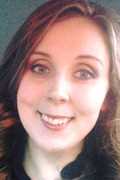VOL. 41 | NO. 44 | Friday, November 3, 2017
Shared space: Makers don’t need their own workshops
By Linda Bryant
“Makerspaces” have been popping up across the country and in Nashville in recent years. These organizations can take on different forms, but they generally create affordable access to industrial tools and shared work spaces for everyone from do-it-yourself furniture makers to robot enthusiasts to wood carvers, jewelry makers and inventors.
Someone working in a makerspace could as easily be a seamstress working on an elaborate theater costume or an engineer designing a robot toy.
Makerspaces can be thought of as fabrication facilities for the public – a cross between a small business incubator and a manufacturing plant, with a dose of academia and community spirit thrown in.
The Ledger spoke with representatives of two maker organizations in Nashville to better understand Nashville’s maker culture: Kevin Galloway, a Ph.D. in engineering and director of making at Vanderbilt University, and Jenn Deafenbaugh, workshop coordinator and board secretary at Make Nashville, a 24/7 makerspace on Woodland Street in East Nashville with about 50 members.
Kevin, Vanderbilt opened the Wond’ry fairly recently. What is it? How did it get started?

Galloway
Galloway: “The Wond’ry was in development for a number of years. We officially opened our doors last November. The Wond’ry is located at the Innovation Center on campus.
“It’s a connection point for makers across campus, and it’s also a connection point for external collaborators and people who want to interact with faculty and students. It’s a great starting point for them to enter into conversations and talk about their projects. It’s also an anchor space for students to pursue ideas that they might have, and it’s a resource for students working on projects.
“As part of that we try to make all of the resources available to students and try not to have cost barriers to creative endeavors.”
“Mentors and experts come and represent different domains. A student may want to develop an idea and just doesn’t know who they need to talk to [about] developing their idea. It might be someone who’s in venture capital, law or licensing.”
Jenn, Make Nashville is a fully functional makerspace. We hear it’s buzzing with activities and classes. What are people making there?

Deafenbaugh
Deafenbaugh: “One of our members makes guitars, so he comes to Make Nashville to work on electric guitar bodies. We have people who do metal working. There are people making furniture. We have a gentleman who is making wooden boxes.
“One really cool project this summer was a grow room that was an 8-foot sphere with shelves on it that was a mini-greenhouse. We have people who do robotics and other electronics.
“The “battle bot” trend is big here. There’s an active sewing lab. One woman does a lot of costuming. If a member has an interest in a specific kind of making, we grow that area. For example, we will be having our first jewelry workshop in November.”
“We have a group called cosplay collective that comes in and they do foam crafting and props for comic conventions. They also will go to hospitals dressed as various characters. They make a lot of their costumes and parts at Make Nashville.’’ (Cosplay, a contraction of “costume” and “play.” is a hobby in which participants called cosplayers wear costumes and fashion accessories to represent a specific character.)
Kevin, what is the maker community like at Vanderbilt?
“The maker community is strong at Vanderbilt. Now with the Wond’ry makers on campus, they have a common place to communicate.
“Before, if you were a student at Peabody (School of Education at Vanderbilt), there really wasn’t a place for you to make 3D printings or to develop prototypes if you wanted to.
“The engineering department has a machine shop, for example. They have some resources for makers, but we are trying to make these offerings available to everybody at a central place on campus. It’s a central hub.’’
Jenn, how much is membership at Make Nashville? What kind of making is popular there?
“We have different options for membership. Some people come occasionally, and that’s $35 a month. Regular monthly access, if you want 24/7 access, it is $75 a month. Student membership is $50, family membership is $125.
“Actually our metal working workshops and welding workshops generally sell out. If a workshop is unique or people don’t really have access to the technology or something major that you would want to have a guide to learn, where you’d need an expert to show you what to do, those are the most popular classes.”
Kevin, do other universities have programs like Wond’ry that consolidate the maker movement on campus and to a certain extent to the community at large? How did the maker movement become part of academia?
“This is definitely a growing trend. I attended a maker space seminar at MIT that had a training component – how to set up your own makerspace at your university or high school.
“Yale has a makerspace. Their engineering library wasn’t being used so they essentially turned it into an 8,000-square-foot makerspace with equipment from laser cutters to sewing machines to laser printers and lots of open tables for people to pursue their ideas and projects.
“Rice University has their Design Kitchen, which is another 10,000-square-foot makerspace with a similar setup. Last year Arizona State opened up a 15,000-square-foot space.”
“In an academic setting you want students to be able to take an idea, make a prototype and test it. Ideally, you want them to be able to iterate on it so they have a chance to make another go of it in order to improve [the] idea.
“There are so many things you take with you when you can see your idea go from hypotheses to project design. Another added benefit from the university standpoint is that a place like Wond’ry de-risks this kind of process.
“If you go back to the ’70s and ’80s, you’ll see there were maker shops back then. For example, there was a woodshop at my school. They faded away because they were too expensive to maintain and because they were too dangerous.
“These days, technology allows students to get their hands back on their ideas in a whole new way instead of just doing all book work. For example, there are CAD tools, which require a simple process of loading a file into a printer.’’ (Computer-aided design is the use of computer systems or workstations to aid in the creation, modification, analysis or optimization of a design.)
Jenn, how would you characterize Nashville maker community?
“Looking at other cities, we are a little bit behind as far as having a good birthing of maker spaces. We have Fort Houston, Make Nashville and the Wond’ry here, and a couple of smaller spaces. But we are starting to pick up.
“There are coastal cities that have been achieving and utilizing makerspaces for over a decade. There is a lot of interest in it.
“So, although we have some great options, we don’t have a lot of spaces where people can just go and make stuff to be a part of the community. At least compared to some other cities.”
“Getting together and recognizing craftsmanship is important, and it’s something that we’ve lost touch with as a society. Look at what happened in the ’80s and ’90s with the cutting back of woodshops and metal shops; I think this a response to that. Everyone thought that technology was going to take over, and we weren’t going to need handmade skills anymore.”
“I feel like what’s happening now is that people who didn’t get those skills are realizing that they are missing out on something. Being able to make something not only gives you a personal satisfaction, it can give you employable skills. It can be a tangible way to make a real living. As a culture we may be trying to get back to that.”
Kevin, your two organizations cross pollinate to some extent. For example, you worked together with Make Nashville recently to present the Nashville Mini Maker Faire at the Wond’ry. Can you explain what happened at Nashville Mini Maker Faire?
“The Maker Fair is an event for all ages basically from middle school to adults to show off what they have been making. It could be robotics, it could be crafts, it could also be a science project. We also provide a place for vendors where they can display what they are creating and selling.
“The Maker Fair is a place where you can see ideas in action and see what others are doing. I think of it more as an idea market exchange.
“A place where you can gather ideas and processes to incorporate into your own projects.”
“This year’s Mini Maker Faire was great. About 4,000 people came. Our makers are bringing it on all levels. They are making everything from wood carving to robotics. If you are a launching a company and trying to bring it to reality, that is part of the maker movement.
“I would say it’s bringing elite, different talents together, creating a soft environment where they can talk and share what they’ve learned and incorporate processes. When you have diverse makers they begin brainstorming and putting things together that they never would have come up with by themselves.”